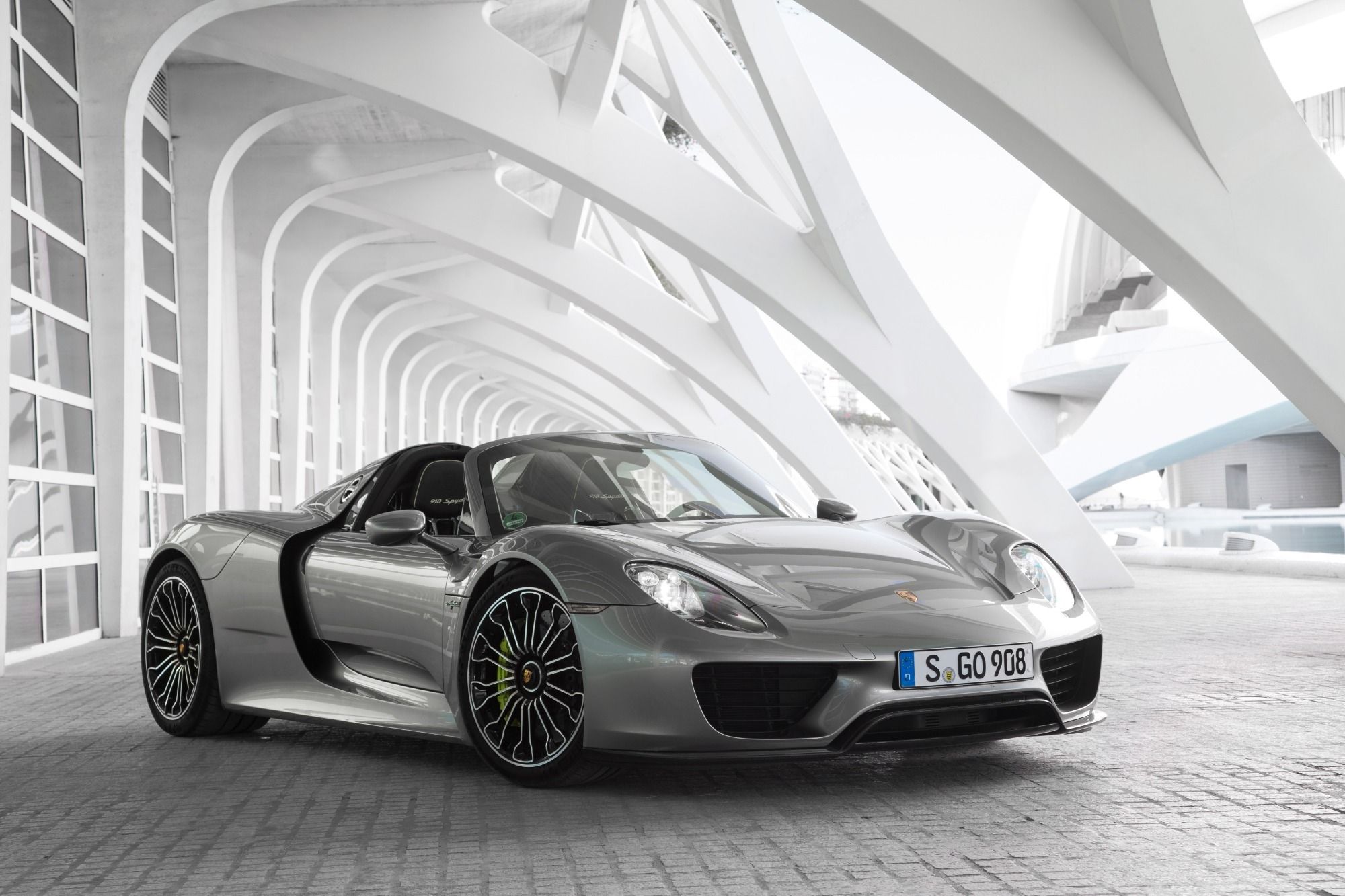
Porsche has used the 75th anniversary since the first car to bear the Porsche name was unveiled (8 June 1948) to reveal its vision for a future hypercar. Introducing Porsche Mission X, the electric successor to the Porsche 918 Spyder... or at least the concept previewing said hypercar.
Revealed at a special anniversary celebration at the Porsche Museum in Stuttgart, the Mission X previews Porsche's future with electrification as its primary - but not only - driving force. Synthetic fuels will still be part of Porsche's future.
Similar in size to the Carrera GT and 918 Spyder, the Mission X measures approximately 177 inches long, 79 inches wide, and less than 47 inches tall while riding on a 107.5-inch long wheelbase. 20- and 21-inch wheels with staggered fitment (315/20 R 21 rubber at the rear and 255/35 R 20 up front) are a concept design with transparent aeroblades at the rear, and the car has Le Mans-style doors opening forwards and up.
The Mission X will enter production, and when it does, Porsche wants it to be the fastest road-legal car around the Nurburgring Nordschleife. To achieve this, it will have a perfect 1:1 power-to-weight ratio of metric horsepower per kilogram, or 1 horsepower per 2.2 lbs. However, Porsche hasn't said how much it will weigh or how much power it will produce.
What we do know is that the battery will be located behind the cockpit to provide a mid-engined weight balance and that the car will have "significantly more downforce than the current 911 GT3 RS," including adaptive aero with DRS functionality. It will also be backed by a 900-volt charging architecture which means its battery can be charged roughly twice as fast as the current Taycan Turbo S.
The bodywork is all carbon fiber in the form of a lightweight exoskeleton, with a glass dome around the cockpit. Most of the body is finished in Rocket Metallic paint - exclusive to this concept - but the lower sections have been left in exposed carbon fiber.
The LED lights take on a new signature inspired by the 906 and 908 race cars but feature new technology that look like eyes opening when the lights are activated.
At the rear, a full-width light bar features, with transparent illuminated Porsche lettering. The E in Porsche pulses while the hypercar is charging.
The Mission X is the first model to bear the new Porsche crest, which was revealed last week ahead of this momentous occasion.
Inside the cockpit, two occupants are sat in an asymmetrical cabin, with carbon fiber bucket seats featuring Andalusia Brown leather pads, except for the driver's seat which boasts Kalahari Grey pads. The seats feature six-point racing harnesses, hinting again at the Mission X's Le Mans Prototype inspiration.
An open-top steering wheel is race-inspired yet again, but has something curious... shift paddles. This could suggest that Mission X will make use of a proper transmission, or perhaps a simulated one, but Porsche hasn't said which. It also features drive mode switches that can adjust compression and rebound damping as you can in the 911 GT3 RS.
A record button activates the plethora of exterior cameras to record your lap attempts from multiple angles.
The curved instrument cluster ahead of the driver adjusts per driving mode and in Track mode showcases only primary information. The 8.4-inch infotainment display on the center stack is canted towards the driver in a clear show of who matters most in the Mission X.
Ahead of the passenger, a bayonet system lets the co-pilot lock in a Porsche Design stopwatch module with an analog and digital display to record what will presumably be one of the most incredible Nurburgring lap times we'll see in our lifetimes. This clock can display lap times and data of the driver, and Porsche says is suitable for both track and rally applications.
"The Porsche Mission X is a technology beacon for the sports car of the future. It picks up the torch of iconic sports cars of decades past: like the 959, the Carrera GT and the 918 Spyder before it, the Mission X provides critical impetus for the evolutionary development of future vehicle concepts," says Oliver Blume, Chairman of the Executive Board of Porsche AG. "Daring to dream and dream cars are two sides of the same coin for us: Porsche has only remained Porsche by constantly changing."
A production timeline has not been set, and while some reports suggested it would only arrive in 2028, it may arrive sooner if Porsche can have its next-gen battery tech ready in time.
